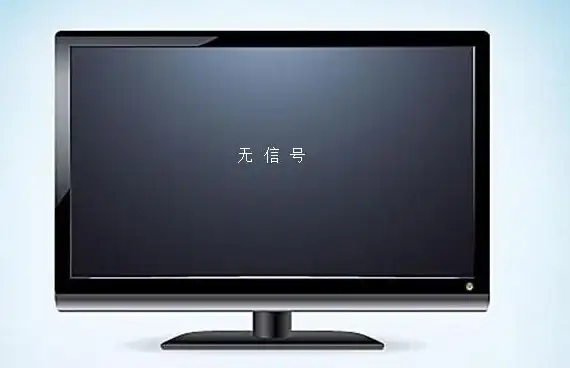上一篇
Redis 数据循环:保留中心词据从Redis中循环获取数据,循环从redis取数
- 问答
- 2025-08-09 10:09:59
- 3
Redis数据循环:如何高效保留中心词并持续获取数据
场景引入:电商平台的实时推荐系统
想象一下,你正在运营一个日活百万的电商平台,每当用户浏览商品详情页时,系统需要实时推荐"相似商品"和"你可能也喜欢"的列表,这些推荐数据都存储在Redis中,但问题来了:如何在不影响性能的前提下,持续从Redis获取最新数据,同时确保核心推荐词(比如用户最近浏览的3个商品ID)始终保留在内存中?
这就是我们今天要聊的Redis数据循环技术——一种既能保持核心数据常驻内存,又能高效循环获取周边数据的实用方案。
核心思路:中心词保留+循环取数
中心词保留策略
中心词(比如用户最近浏览记录)是我们必须长期保留的关键数据,在Redis中,我们可以采用两种方式:

# 方案1:使用永不过期的String类型
redis_client.set(f"user:{user_id}:core_keywords", json.dumps(core_data))
# 方案2:使用足够长的过期时间(比如7天)
redis_client.setex(f"user:{user_id}:core_keywords", 604800, json.dumps(core_data))
循环取数实现方式
对于需要循环获取的周边数据(比如推荐商品列表),我们有几种典型模式:
方案A:列表轮询法
def get_rotated_data(user_id):
data_key = f"user:{user_id}:recommendations"
# 从列表左侧弹出第一个元素
item = redis_client.lpop(data_key)
if item:
# 将弹出的元素放回列表右侧
redis_client.rpush(data_key, item)
return json.loads(item)
return None
方案B:索引标记法(更适合大数据量)
def get_rotated_by_index(user_id):
data_key = f"user:{user_id}:recommendations"
index_key = f"user:{user_id}:recommend_index"
# 获取当前索引
current_index = redis_client.get(index_key) or 0
# 获取列表长度
list_length = redis_client.llen(data_key)
if list_length == 0:
return None
# 获取索引位置的数据
item = redis_client.lindex(data_key, current_index)
# 更新索引(循环)
new_index = (int(current_index) + 1) % list_length
redis_client.set(index_key, new_index)
return json.loads(item) if item else None
实战优化技巧
管道化操作提升性能
def get_data_with_pipeline(user_id):
pipe = redis_client.pipeline()
pipe.get(f"user:{user_id}:core_keywords")
pipe.lpop(f"user:{user_id}:recommendations")
core_data, rotated_item = pipe.execute()
if rotated_item:
redis_client.rpush(f"user:{user_id}:recommendations", rotated_item)
return {
"core": json.loads(core_data),
"rotated": json.loads(rotated_item) if rotated_item else None
}
内存优化方案
当数据量很大时,可以考虑:
- 对循环数据使用zset(有序集合)按热度排序
- 对中心词使用hash类型节省内存
- 设置合理的maxmemory-policy(比如volatile-lru)
# 使用zset存储可循环数据
redis_client.zadd("recommendations", {"item1": 1, "item2": 2, "item3": 3})
# 循环获取时
def get_rotated_from_zset():
# 获取并增加分数实现轮询
pipe = redis_client.pipeline()
pipe.zrange("recommendations", 0, 0) # 获取分数最低的
pipe.zincrby("recommendations", 1, "item1") # 增加分数使其"沉底"
item, _ = pipe.execute()
return item[0] if item else None
异常处理要点
在实际生产环境中,别忘了处理这些边界情况:
- Redis连接异常时的本地缓存降级
- 数据不存在时的默认值处理
- 并发修改时的乐观锁控制(使用WATCH/MULTI)
- 内存不足时的预警机制
def safe_get_data(user_id):
try:
# 使用watch确保原子性
with redis_client.pipeline() as pipe:
while True:
try:
pipe.watch(f"user:{user_id}:recommend_index")
current_index = pipe.get(f"user:{user_id}:recommend_index") or 0
pipe.multi()
pipe.lindex(f"user:{user_id}:recommendations", current_index)
new_index = (int(current_index) + 1) % pipe.llen(f"user:{user_id}:recommendations")
pipe.set(f"user:{user_id}:recommend_index", new_index)
item, _ = pipe.execute()
return json.loads(item) if item else None
except WatchError:
continue
except RedisError as e:
log_error(f"Redis操作失败: {e}")
return get_local_cache(user_id) # 降级方案
Redis数据循环技术在实际系统中非常实用,特别是在需要:

- 保持核心数据常驻内存
- 循环展示非核心数据
- 平衡内存使用和性能的场景
关键点在于:
- 区分中心词和循环数据,采用不同的存储策略
- 选择适合的循环方式(列表轮询/索引标记/zset分数等)
- 使用管道和事务保证操作原子性
- 实现完善的异常处理降级方案
按照2025年最新的Redis最佳实践,这种模式在推荐系统、消息轮播、负载均衡等场景下依然保持着极高的性价比。
本文由 佛三诗 于2025-08-09发表在【云服务器提供商】,文中图片由(佛三诗)上传,本平台仅提供信息存储服务;作者观点、意见不代表本站立场,如有侵权,请联系我们删除;若有图片侵权,请您准备原始证明材料和公证书后联系我方删除!
本文链接:https://up.7tqx.com/wenda/575984.html









发表评论